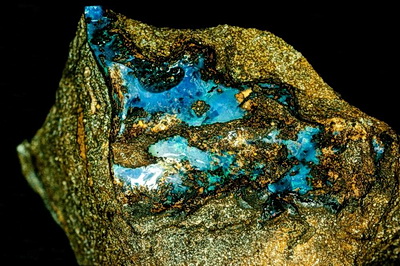
With its diverse, vibrant colors and captivating patterns, this precious stone is a perfect match for earrings, bracelets, necklaces, and watches. Opal is amorphous which means it does not have a pre-defined crystalline structure. This sets it apart from other gemstones and it is this property of opal that is the reason for the stone coming in many different colors and a range of shapes.
The article below talks about some interesting facts about opal. Some of these might surprise you.
1) Opal Goes Way Back
Writers, artists, and craftsmen have held the opal in high regard since olden times. The exact discovery of the gemstone is not known as records vary. However, artifacts containing traces of the gemstone date as far as 4000 BC. The Romans referred to opal as opalus which means precious stone.
2) All Good Things Take Time and Patience
According to most prominent researchers on gemstones, silica (which forms a base component of opal) overran parts of Australia approximately 20 to 30 million years ago. With time, through millions of years, silica solidified between rocks and canyons to form opal. According to some research, it takes about five million years to solidify a single centimeter of opal.
3) A Gemstone Formed by Rain
The exact process involved in the birth of opal is still not clear. However, most experts believe that heavy rains washed the silica into canyons and cracks, initiating its creation. As the water was evaporated, only the silica was left behind in gel form, eventually hardening over millions of years. This theory is arguably the most valid one. Giving credence to this is the fact that opal contains significant traces of water ranging between 5 to 20%.
4) Australia is the Main Source of Mining
Australia holds a market monopoly in the supply of opal to the world. Australian mines provide over 95% of the world’s supply of opal. Other countries known for notable quantities are Brazil, Mexico, and Ethiopia.
5) A Play on Color: Precious Opals and Commons Ones
As with most other gems, opal comes in two main categories – precious and common. Precious opals come in popping colors such as a fiery red or they mimic a slew of colors that are pleasing to the eyes. This is referred to as a play of color and is used to classify unique opals that have various colors blended to form a beautiful precious rock. Some opals, like blue ones, have veins running through them, which makes this gem unique among its own family, as no one opal is the same.
6) How Do Opals Get Their Various Colors?
Expensive opals have two color themes; one is the background color that is formed due to impurities contained within silica. The other colors come to be due to the way silica hardens into a crystalline form. Silica consists of minuscule spheres that merge. During their fusion, small gaps are formed between these spheres where light is diffracted. This phenomenon caused by light diffraction is responsible for the shapes and color play of opal.
7) Intensity and Diversity Drive the Price
Intense-colored opals along with those that have the most vibrant diversity of colors are priced the highest.
8) A Gemstone That is Soft
The Mohs Scale ranks gemstones and precious rocks according to hardness density. Opal ranges between 5.5 and 6.5 on this scale. This implies that they require more caution as compared to other gemstones and birthstones as they are more brittle.
9) Superstitions and Bad Luck
A superstition among people regarding the purchase of opal is that it brings bad luck to people. It’s also believed that the only people shielded from such effects were those whose birthstone is opal. Countless tales of opals being damaged or destroyed have fueled this superstition. A major reason behind the superstition existing is due to the stone’s fragile nature.
10) Opal as an Official Birthstone
The National Association of Jewelers agreed in 1912 to enshrine Opal’s position as the official birthstone of October. Opal has been said to be used as an official birthstone for October since the 15th Century.
11) Extraterrestrial Stone
Opal is the second gemstone to be found in outer space. It was discovered on Mars in July 2015 by a NASA orbiter.
12) Types of Opals
As mentioned earlier, opal comes in various colors and shapes. Each color has its own special traits and unique combinations. Opals are mostly found in purple, blue, red, orange or yellow. Black opals are treated as the most exclusive gemstone, though they too come in different shades of black.
13) Treatment of Opal
Most gemstones are treated to bring out their inner beauty and luster. Opals are mostly left in their natural state except a few that require darkening.
14) A Stone with All the Colors of a Rainbow
Silicon that had seeped through the cracks in boulders and formed into opal over time usually depicts all the colors of a rainbow within one stone. This is one of the most unique properties of opal and a wonder of nature.
